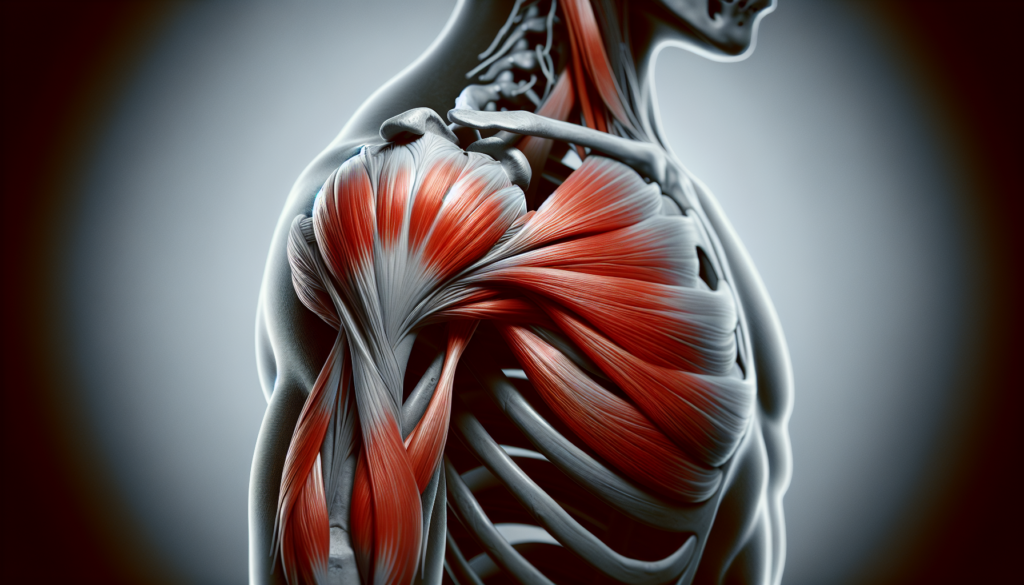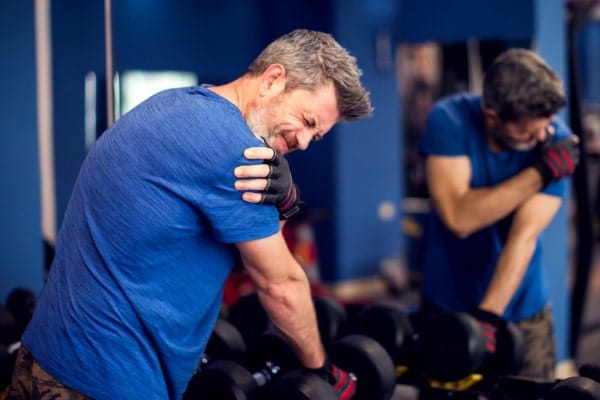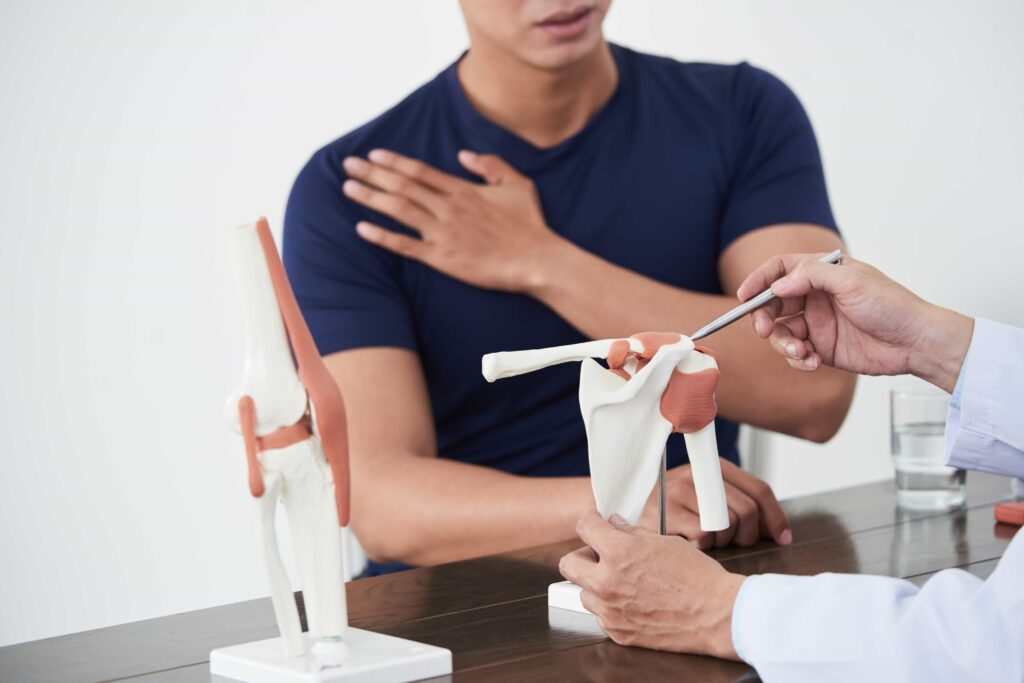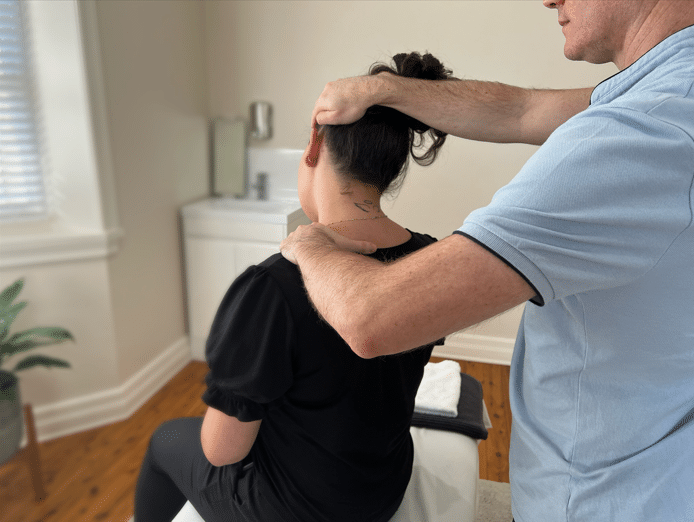- 02 9712 1736
- [email protected]
- 212 Great North Road, Five Dock, NSW 2046
- Open 7 days a week
Is your shoulder pain a supraspinatus tear, or a sign of something more serious? There are a few main culprits behind shoulder pain from bursitis to a SLAP lesion. However one of the most common causes of shoulder discomfort and restricted movement is a supraspinatus tear. This article dives into the signs and symptoms of a supraspinatus tear, how it’s diagnosed, and what you can do about it. We will provide you with a clear roadmap for dealing with this often-debilitating shoulder injury.

A supraspinatus tear, is the most common site for rotator cuff tears. You will feel it as a pain through the front of your shoulder. A loss of shoulder mobility (range of motion), and weakness in the shoulder. Imagine struggling with your daily tasks, like dressing or reaching for an object, because your shoulder doesn’t cooperate and you have an accompanying sharp pain. Getting the right treatment hinges on recognizing these signs.
You can have two types of pain with a supraspinatus tear. Firstly you can have a nagging achy pain in the front of your shoulder. However more common is an intense pain from a supraspinatus tear; it’s often sharp or burning, intensifying during specific arm movements. In particular when trying to raise and lower the arm. This type of arm pain worsens at night, making sleep elusive. Before imaging confirmation, this specific pain pattern, including exacerbation during certain movements, raises suspicions of a supraspinatus tear.


Sleep is not just about comfort. It’s about rejuvenation and healing. Unfortunately, the discomfort of a supraspinatus tear can cause sleep disruptions, especially when lying on the injured shoulder. The pain intensifies during side-lying or when resting on the affected side as you compress the inflammation present, leading to sleep disruption.
Imagine having your shoulder mobility hampered, making even simple tasks challenging due to decreased arm strength. This is what happens with a supraspinatus tear, as it is a very important muscle, in all shoulder movements. Reaching behind your back or performing overhead activities, essential for daily tasks, becomes a struggle. The pain significantly hampers your daily life and independent activities. This leads to frustration, and also, with every movement, you will experience increasing amounts of pain. To test supraspinatus strength, a healthcare professional will perform a muscle test. This involves you resisting arm movements as directed by your health care professional.
The rotator cuff is comprised of four muscles collectively known as the rotator cuff muscles. They are connected by tendons to the head of the humerus. They are crucial for your shoulder stability and arm movement. The muscles work in harmony to allow you to move your arms in their full range of motion. The four muscles of the rotator cuff are:

Injuries to the rotator cuff can range from tendon inflammation to partial tears and complete tendon ruptures, with the prevalence increasing with age.
The shoulder joint is a marvel of nature, allowing for a high degree of mobility. While providing tremendous power and strength. It’s a ball-and-socket joint formed by the upper arm bone fitting into a shallow socket in the shoulder blade. Ligaments, along with a fibrous joint capsule, stabilise it, while various muscles facilitate its movements and stability. To diagnose and treat a supraspinatus tear effectively, comprehending its complexity is imperative.

The supraspinatus muscle, part of the rotator cuff, plays a significant role in shoulder movement. It’s responsible for the initial 0-15 degrees of arm abduction before the deltoid muscle takes over. Its influence is profound, and any injury to it can considerably affect your shoulder function.
Supraspinatus tendon tears are not all created equal. They can be partial, involving as little as 1 millimetre of the tendon, or full thickness, where the tendon is completely severed. Some partial tears may cause no pain and may not be immediately noticeable. However, with time and use, they can develop symptoms that should be immediately addressed. Determining the appropriate treatment method relies heavily on the severity of the tear.
What caused your supraspinatus tear? If it was the result of a specific injury or trauma, like falling on an outstretched arm, lifting a heavy object, or dislocating the shoulder, it’s an acute tear. On the other hand, if it develops gradually due to wear and tear over time, it’s a degenerative tear. Grasping this difference is instrumental in managing your condition effectively.
The size of the rotator cuff tear and your age are significant factors in choosing the appropriate treatment option. The main three treatment options are, conservative care, cortisone injection and surgery. While partial rotator cuff tears typically do not require surgery, deep partial tears, where over 90% of the tendon is torn and pain remains uncontrolled by conservative methods, may necessitate surgical intervention. Your health care expert will be able to guide you in the correct approach.
Diagnosis of a supraspinatus tear begins with a clinical assessment involving a discussion of symptoms and medical history. This is followed by a physical examination to understand the points of pain and weakness and identify aggravating movements. Advanced imaging techniques, such as MRI and ultrasound, are then used to visualize the shoulder’s soft tissues and confirm the presence, place and extent of a tear.

A detailed medical history is often enough to diagnose rotator cuff disorders, including a supraspinatus tear. Your physician will consider your age and history of shoulder movement or trauma, which can increase the suspicion of a rotator cuff tear. Identifying specific symptoms through patient history, such as shoulder pain, weakness, and limited range of motion, can point towards a rotator cuff tear.

MRI scans and ultrasound imaging are often used to diagnose a supraspinatus tear, particularly to assess the extent of the tear after the initial evaluation. Ultrasound allows for a dynamic examination and a quick comparison of the tendons in both shoulders, which helps confirm a diagnosis of a supraspinatus tear.
Conservative care strategies for shoulder pain include:
These strategies aim to provide pain relief and restore your function. Importantly, helping you to avoid the major risks of surgery. In 80 to 85% of patients, an appropriate mix of non-surgical treatments can deliver relief and enhance shoulder function.
The role of your physical therapist is to enhance the strength, flexibility, and movement of your shoulder, arm, and back muscles. Physical therapists devise tailored exercises to decrease your pain, build your strength and correct your movement. Post-surgery rotator cuff repair, a rehabilitation program is essential to regain muscle strength, flexibility, and shoulder function. Recovery is often slow with full recovery potentially taking up to 4 to 6 months.
To manage the pain and inflammation associated with supraspinatus tears, medications like non-steroidal anti-inflammatory drugs (NSAIDs) are often employed. Corticosteroid injections, administered directly into the joint space, aim to offer a more immediate and localised reduction in swelling and pain.
Orthopedic surgeons may recommend shoulder surgery in the context of persistent symptoms that are not relieved by conservative treatment methods. Individuals who are very active, or those who engage in overhead work or sports, may require surgery to regain full function of their shoulder. Persistent pain from a supraspinatus tear, which indicates substantial tendon damage or ineffective non-surgical treatments, frequently mandates surgical intervention.

Rotator cuff repair can be performed using either arthroscopic repair or open surgery, taking into account the specific needs of the tear. Selection of the method relies on various factors such as the size and location of the tear, your overall health, and the surgeon’s preference.
Recovery following rotator cuff surgery varies significantly among individuals. Generally, it takes around 12 weeks to return to most daily activities safely. However, you should follow the advice of your rehabilitation provider as each person’s journey is different. It’s generally advised not to participate in strenuous sports until four to six months post-surgery.

Prevention is better than cure. Recognizing this, there are measures you can take to prevent a supraspinatus tear. Factors such as repetitive overhead work or sports and ergonomic stress can increase the risk of suffering from a supraspinatus tear. Undertaking daily shoulder exercises can build flexibility and strength of your shoulder muscles. Consequently, it lowers the risk of future injuries.
Participation in a regular conditioning program incorporating exercises for shoulder strength and flexibility is a great start. You should look to include muscles such as the deltoids, trapezius, rhomboids, and supraspinatus. All of these muscles are of paramount importance for maintaining shoulder health and minimising injury risk. Maintaining proper exercise form, especially when using weights or equipment, helps minimise the strain on shoulder muscles and prevent rotator cuff injuries.
A fundamental strategy to prevent supraspinatus tears is to identify and modify risk factors. Ensuring ergonomic practices in occupations that put stress on the shoulder and making lifestyle changes, such as avoiding collision sports, can significantly improve the overall health of your shoulder and reduce the risk of experiencing a supraspinatus tear.

Navigating through a supraspinatus tear can be a journey of pain, discomfort, and sleepless nights. But understanding the symptoms, the anatomy of the shoulder, the different tear types, diagnosis, and treatment options, as well as the preventative measures, can equip you with the knowledge to manage this condition effectively and regain normal shoulder function.
A supraspinatus tear can be caused by either a specific injury or trauma, or by wear and tear over time. This can result in either acute or degenerative tears.
If you experience pain, loss of range of motion, and weakness in the shoulder, you might have a supraspinatus tear. These symptoms indicate a potential tear in the supraspinatus tendon.
A supraspinatus tear is diagnosed through a clinical assessment, orthopedic movement tests, and advanced imaging techniques such as MRI and ultrasound.
Treatment options for a supraspinatus tear include conservative care strategies like physical therapy, medications, and injections, and in some cases, surgery may be recommended. Surgery is considered when conservative measures do not provide relief.
To prevent a supraspinatus tear, it’s important to engage in daily shoulder exercises, maintain ergonomic practices, and consider lifestyle changes such as quitting smoking. These measures can help reduce the risk of this type of injury.

Forest Lodge, Annandale, Glebe, Leichhardt, Balmain, Haberfield, Canada Bay, Rozelle, Rodd Point, Wareemba, Stanmore, Petersham, Lilyfield, Hunters Hill, Enfield, Cabarita, Mortlake, Rhodes, Burwood Heights, Birchgrove, Gladesville, Huntleys Point, Abbotsford, Ashfield, Croydon Park, Croydon, Chiswick, Russell Lea, Burwood, Strathfield, Concord, Drummoyne, North Strathfield, Liberty Grove, Dulwich Hill, Lewisham, Camperdown, Ashbury, Homebush, Homebush West, Woolwich, Henley, Summer Hill, Sydney Olympic Park
212 Great North Road, Five Dock, NSW 2046
Onsite parking available
Phone: 02 9712 1736
Email: [email protected]

About
Five Dock Osteopathic & Chiropractic is located in Canada Bay, in Sydney’s Inner West. Servicing suburbs including Burwood, Croydon, Drummoyne, Five Dock, Haberfield, Concord, Abbotsford, Chiswick, Leichhardt, Wareemba, Russell Lea, Summer Hill, Strathfield.
Clinic hours
Monday, Tuesday, Thursday 7AM – 7PM
Wednesday, Friday 7AM – 6PM
Saturday 7AM – 2PM
Sunday 8AM – 2PM
Contact details